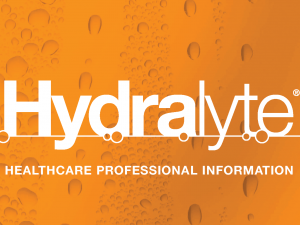In this article, Sue Frankland looks at the global problem of wastage of medications, including causes such as overprescribing and non-adherence. She also presents information from her master’s dissertation on how people understand, and respond to, medication expiration dates
Andrew Little Locality network announcement speech, Levin | Taitoko, 21 April 2022
Andrew Little Locality network announcement speech, Levin | Taitoko, 21 April 2022
Kia ora koutou,
Thank you for having me here today.
I begin by acknowledging my colleague, Peeni Henare, the Associate Minister for Māori Health, who cannot be with us due to other commitments.
Peeni and I have worked closely on today’s kaupapa - as we have with the rest of the health reforms - and he is as keen as me to see the changes we have been pursuing.
I also want to acknowledge local mana whena, as well as the MP for Ōtaki, Terisa Ngobi.
The purpose of today’s event is to announce the first locality planning networks.
Locality planning networks are an essential feature of the health reforms which, subject to the legislation passing in Parliament, will take effect on 1 July.
Locality networks will be how communities, including iwi, have a say on what health services are provided for them, and how they will be provided.
A locality for the purposes of the reformed health system has to be a meaningful size – not so large it is impossible to coordinate services, and not so small that it would mean an unwieldy number of localities which would fail to provide the cohesion we are seeking.
The first part of the challenge with localities is to identify areas around New Zealand to constitute each locality, and that will then be the basis of health networks and funding.
At this stage, we anticipate there will be between 60 and 80 localities once they are all up and running by July 2024.
The reason I am here in Levin | Taitoko is because one of the first locality networks will be across Horowhenua.
This locality network will cover 32,000 people. Within this community 27% are Māori, 7% are Pacific and 31% live in rural areas. 38% suffer from deprivation.
The local DHB, MidCentral Health, has been a leader in locality planning, and that’s why this area is first out of the blocks. I’ve seen how around Levin practical locality processes have already been used for planning services.
I’ve also seen other local initiatives that show community leaders are fully engaged in seeking innovative approaches to future health services here, such as the proposal for a health hub.
And I’ve seen the local PHO innovating with the establishment of a nurse practitioner-led medical practice giving access to primary health care to many who have struggled to get access before.
Locality networks will build on that local leadership in a new, joined-up nationwide health system.
As well as the locality network around Levin, there are eight other localities which will be established and ready to operate from 1 July.
I will come back to the detail about locality planning shortly, and tell you about the eight other places where locality networks will be established.
First, I want to talk about the importance of a well-functioning health system, and why Labour governments typically give priority to it.
Then I want to talk about some of the challenges in health this government has faced, and what we’ve done about them.
Finally, I will talk about the reforms – what we are doing, what we expect out of it, and the importance of locality networks within the reforms.
A STRONG HEALTH SERVICE IS VITAL FOR ECONOMIC AND SOCIAL WELLBEING
We often hear about the social determinants of health. Factors which have a major bearing on our health such as the quality of housing we live in, our income, whether we have a disability, the place that we live.
Many of these factors mean a person may be more likely to suffer worse health, and even a shorter life expectancy, if those factors are not taken into account when health services are being planned.
In a country like New Zealand with a comparatively small population, and with a few concentrated population centres and many smaller places, and with a strong ethos for social equity, a good public health service is vital.
Many times in our shared history we have learnt why it is necessary to have a well-supported health system. The 1918 flu epidemic, the ravages of poverty during the Great Depression, the polio epidemics from the 1920s to 1960s. More recently, of course, we have all endured the COVID-19 pandemic.
These events have all led to big improvements in health provision. In the mid-1930s the first Labour government put health at the centre of its social security package, with significant new funding for hospitals and doctors. The aim was to make health services more accessible to more people.
Improvements in health services went hand in hand with more investment in housing and in welfare measures to relieve poverty.
The old Department of Health also made Māori health a priority. Building on the trailblazing work of Māori health leaders Tā Peter Buck and Tā Maui Pomare in an earlier generation, officials worked with Māori communities in rural and isolated areas to make services available.
All of this laid a foundation for our health services today.
Good health was good for whānau, communities and the businesses and organisations that people worked for.
Today, we have high expectations that necessary health services will be available when we need them. We expect the social determinants of health will be dealt with, too.
It is part of the social contract of Aotearoa New Zealand.
The challenge isn’t just about more and better health services. It is about making sure every New Zealander has a fair chance of getting good healthcare. Regardless of where we live or who we are.
HEALTH IN 2017
In 2017 this government inherited a public health system that had been systematically underfunded for many years. Our population had grown by about 600,000 in the previous decade, however health services had not been funded to keep up.
Health infrastructure such as buildings and IT saw very little investment and so many facilities were in a poor state.
With twenty separate district health boards, each funded to provide services for “their population”, we saw a growing difference between districts in access to and quality of services. For example, the performance of cancer services were highly varied in different parts of the country and attempts at consistent national programmes, such as the bowel screening programme, came up against barriers in each health board.
A safe staffing accord for nurses committed to in 2008 and for which implementation started in 2009 saw very little progress over the following nine years.
An independent oversight body for mental health, the Mental Health Commission, was abolished in 2012 and mental health services were neglected.
In 2017 the incoming Labour government set up an immediate review of mental health services and a longer review of the rest of the health and disability system.
We have increased funding for health by billions of dollars. This includes funding for Pharmac which has increased every year we have been in government after a three-year freeze under the previous government.
We committed to fulfilling the safe staffing accord for nurses and funded 3,000 more nurse positions across our hospital network.
Even before any of the reviews were complete, we invested in mental health support for children in Canterbury and Kaikoura because of the long-term effects the earthquakes in those regions were having on young people.
The mental health review recommended we prioritise investment in the single biggest gap in mental health, services for those with mild to moderate needs. In 2019 we committed $1.9 billion over four years to address that gap as well as to lift funding for DHB mental health services, invest in the workforce and improve services in other parts of government.
I am pleased more than 250,000 free mental health sessions at local GP clinics have now happened because of that investment.
The reality is we are building a whole new mental health system and, of course, there is a lot more to do.
2021 REFORMS
Now we are about to embark on the biggest change in a generation to the way our health services are run.
One year ago today I announced the changes we are making. These are:
- Combining our twenty district health boards into a single nationwide organization, Health New Zealand.
- Setting up a Māori Health Authority to provide leadership on Māori health, and support the growth and development of Māori health services. Māori will provide leadership for their health services and they will have a stronger voice across the health system so that the whole system does better for Māori and other groups under-served by it – Pacific, disabled people and rural communities.
- Setting up a dedicated public health agency. This will strengthen leadership in those activities that help to prevent poor health.
- Setting up a better way of hearing from communities about what they want from health services – and this is what we mean by locality planning.
Underpinning all this, the legislation currently going through Parliament requires us to properly fulfil our obligations under the Treaty of Waitangi and makes it a priority for health services to achieve greater equity.
In time we will get rid of the postcode lottery.
LOCALITY PLANNING
I return to locality planning networks.
Locality networks are the new regional basis for organising health services for communities.
This is how they will work. A locality coordinator will draw together health providers, iwi, local authority representatives, and social sector agencies to work out what is available and what is needed at a local level. The purpose of the process is to engage with the relevant community and understand its needs.
The plan that is developed will be agreed with the relevant iwi Māori partnership board and will be tailored to the community covered by the locality. That plan will form the basis of the funding decisions by Health New Zealand and the Maori Health Authority.
The locality structure will be a mechanism for iwi and communities to have a voice in their healthcare. For example, one locality might have a need for more diabetes support – and it will be up to local partnerships to agree on whether dedicated services are needed.
The care and support that is delivered will be joined-up across different health and wellbeing providers. For example, someone’s GP, local pharmacist and in-home nurse should be able to work better together to provide the wraparound care and support that that individual and their whānau need.
And health and wellbeing providers will be connected to other community organisations that have a role in supporting people. This will ensure that we can better support all of a family’s needs, across areas like housing, employment and finances alongside healthcare.
To achieve this, networks of providers including health and social care organisations will be set up. There will be different mechanisms that will encourage these providers to work together, such as short and longer term provider contracts, financial incentives, and data sharing and privacy agreements. Whatever the mechanism, the intention is for care to be comprehensive and holistic.
Today, I am pleased to announce that we are supporting nine areas around New Zealand that will be the first to roll out the locality approach. As well as Horowhenua the areas are:
- Ōtara/Papatoetoe
- Hauraki
- Taupō/Tūrangi
- Wairoa
- Whanganui
- Porirua
- West Coast
- Eastern Bay of Plenty
You will see from this list an emphasis on areas with a strong Māori or Pacific population and a big emphasis on rural populations. These are groups for whom services at present struggle to deliver on an equitable basis, and they’re the place to start.
The list includes metropolitan areas, provincial urban areas, rural areas and mixed rural and urban areas.
For rural communities, there has been a longstanding challenge to recruit health workers to them and to have services available as close as possible to people. Locality planning offers the opportunity for better coordination between services currently on offer. More importantly, it’s a chance to rethink how services are offered (which could be digitally) or how they are organised (for example, different practitioners might come together to better utilize facilities or try different business models).
These nine areas I am announcing today were chosen because there was already positive progress happening in them.
CONCLUSION
We have made good progress on the path towards reforming Aotearoa New Zealand’s health system. Our focus quite rightly has to be on transitioning to the new health entities while minimising disruption to the workforce.
But we also have to keep our eye on the long-term goal of transforming the way things are done so that it makes a tangible difference to people's health and wellbeing.
Rolling out the locality approach is another step in the change we are making.
There are still challenges to meet. Legislation still has to pass through Parliament and there is much work to be done to get the Ministry of Health and the new entities ready for 1 July which is only weeks away.
But we are well on the way and I take this moment to appreciate the great work that is happening as we work together towards a common goal of pae ora – a healthy future for all.





